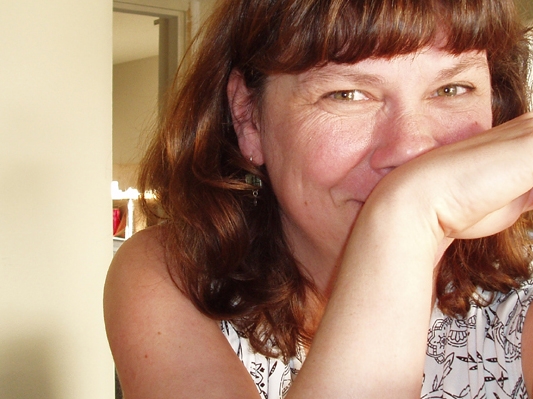Are Your Clients Too Embarrassed to Ask You This Question?
My friend Jaime was the photographer for the Whereapy shoot. As she was working she mentioned that she'd been getting bodywork for years and mentioned she needs and enjoys it… yet she feels something is missing. And what's missing is something she can't ask for.
She has a sore butt.
Jaime hunches at her desk editing photos for hours on end. Check out her FaceBook feed and you'll find her chugging coffee and burning the midnight oil.
The results are pretty easy to figure out. Every two weeks, her neck, upper back and lower back are all screaming for attention. It's time for Jaime to see her massage therapist to get some relief.
During the photo shoot, Jaime noticed that I do the glutes as part of my normal routine. She said, “Umm... do you normally do that? How do I ask for that? Because… You know, it feels weird and wrong to ask someone to rub your butt.”
Yeah. When you say it like that, it's awkward.
So what’s Jaime's problem? Why can't she simply ask her massage therapist to treat what needs treating?
The answer: communication.
Let's face it. Usually only massage therapists and bodybuilders refer to butts as glutes. We may treat glutes like any other muscle in the body, but to Jaimie, the situation is different. Nobody wants to be embarrassed or feel shame. No one wants to mistaken for a pervert. And "glutes" just isn't in everyday plain language that people use, regardless of their education level or profession.
Now, I’m guessing that when you ask a client how she feels after a treatment, you'd love to hear, "Awesome!" That's a lot better than, "Pretty good."
And there is absolutely no reason why your clients shouldn’t head out the door telling you and everyone else just how fantastic they feel.
To get to awesome, you need to improve your client-therapist communication.
No client should have to wonder what parts of the body will be covered during a treatment. With good communication (and some snug draping), you should be able to handle areas that might be sensitive to your clients, like glutes, abs, and adductors.
You can take a clients treatment from ‘good' to ‘awesome’ in just a couple of easy steps.
It’s quite simple - YOU do the work. Communicate with your clients verbally, non-verbally and visually, and make sure that clients feel comfortable asking you questions they consider awkward or that make them feel shy.
Accept that you must go first and show a sliver of your vulnerable side. Don't whinge on about how crappy life is, rather, share a story. Show 'em your human. Save up tales of your imperfection and in the chatty first interview share a humble tidbit or two.
After the initial greetings, the best way I've found for starting off a session is running through a version of "Heads and shoulders, knees and toes". You might look silly, but that's good, you'll find it amazingly effective.
Tell your clients:
1. What body part you'll be working on
2. In what order you'll be working on them
And POINT to the body part you're discussing as you go.
Ask them questions, too, such as, “Are there are any areas I've mentioned that you want to leave out of the treatment?” or, “I can go lighter or deeper - what do you prefer?”
If you don't gather information to do your job well, some people may not offer it to you easily, so help them get the relief they need. Talking through an entire session may not be ideal for you or for the client, but err on the side of useful communication until they feel comfortable enough to tell you to shush up.
This may seem like elementary stuff, but we can all use the constant, conscious practice of effective communication in our work.
So what do you think? What are your tips for talking about sensitive issues? Do you have a method that works for you? Let us know.



